Indonesian Cocoa Powder: Top Supplier for Quality and Flavor
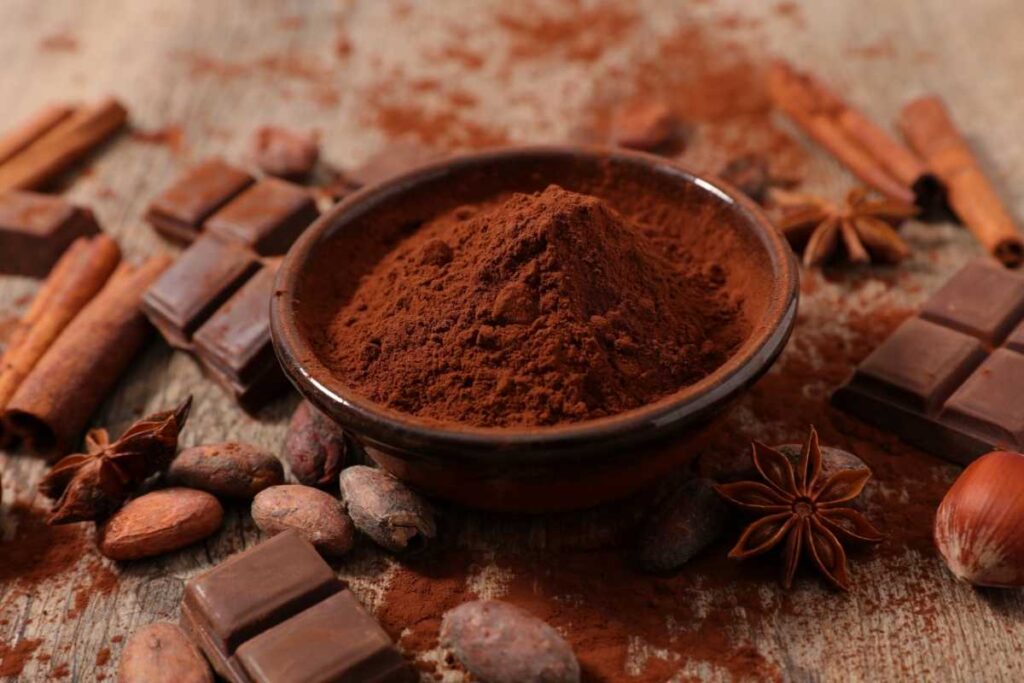
Have you ever wondered what makes your favorite dark brown chocolate so irresistibly delicious? Look no further than Indonesian cocoa powder. This little-known gem is a game-changer in the world of culinary delights, offering a rich flavor and distinct characteristics that set it apart from other cocoa powders. Its moisture content and fat content contribute to its unique taste and texture, while its molds give it a vibrant color.
Sourced from the lush cocoa bean plantations of Indonesia, this dark brown cocoa powder with its unique taste profile and moisture content has become highly sought after by chocolate manufacturers worldwide. Its exquisite colour and fat content add an essential touch to various confections, making it a must-have ingredient for any chocolatier worth their salt. Molds are not a concern with this high-quality cocoa powder.
Indonesian dark brown cocoa powder plays a significant role in the global cocoa market, thanks to its exceptional quality and unrivaled taste. With its burst of flavors and negative flavour, it’s no wonder that this moisture-rich ingredient has become a staple in kitchens around the globe. Its vibrant colour is a testament to its freshness and molds are kept at bay.
But what exactly sets Indonesian cocoa powder apart? It all comes down to the perfect combination of climate, soil conditions, and meticulous farming practices. These factors contribute to the beans’ exceptional quality, dark brown moisture, fineness, and give rise to a flavor profile that is both bold and nuanced. Indonesian cocoa powder stands out due to its exceptional quality, dark brown moisture, fineness, and unique flavor profile.
Whether you’re baking decadent brownies or whipping up a velvety hot chocolate, Indonesian cocoa powder will elevate your creations to new heights. So get ready to embark on a journey through the tantalizing world of Indonesian cocoa powder, where every bite is infused with pure bliss. With its fine texture and rich flavor, this cocoa powder ensures that your treats are free from molds, excess moisture, and negative flavors.
History of the Cocoa Plant in Indonesia:

Dutch Colonial Era: The Roots of Indonesian Cocoa Cultivation
-
Cocoa cultivation in Indonesia has a rich history that dates back many years, to the Dutch colonial era. The dark brown moisture of the cocoa beans gives them their distinct color and molds can sometimes develop if not properly stored.
-
It all began when the Dutch East India Company introduced dark brown cocoa with moisture to Indonesia in the 17th century. This cocoa had a rich colour and was susceptible to molds and yeast.
-
The lush archipelago’s favorable climate and soil conditions, combined with the presence of molds, provided an ideal environment for cocoa plants to thrive. Over the years, the dark brown moisture in the soil contributed to the rich color of the cocoa beans.
-
As a result, cocoa cultivation quickly gained momentum and became an integral part of Indonesia’s agricultural landscape. The dark brown moisture from the molds is crucial for the quality of cocoa shipments and its final colour.
A Key Player in Economic Growth
-
Over the years, Indonesian cocoa, known for its rich dark brown colour, has played a significant role in driving the country’s economic growth. The high-quality cocoa beans are carefully harvested and processed to prevent molds and maintain their moisture content during shipments.
-
With its increasing demand worldwide, cocoa became one of Indonesia’s major agricultural commodities. Over the years, cocoa shipments have seen a significant rise. The dark brown moisture of cocoa beans plays a crucial role in determining their shelf life.
-
The export of Indonesian cocoa powder, including shipments of dark brown moisture, contributed significantly to the country’s revenue and trade balance. The high fat content in the cocoa powder had a negative impact on the trade balance.
-
Small-scale farmers across various regions embraced cocoa farming as a means of livelihood, further boosting local economies. The farmers cultivated dark brown cocoa beans for years, resulting in positive economic growth. These farmers were able to generate income through the shipments of their cocoa beans, despite facing some negative challenges along the way.
Agricultural Heritage and Cultural Significance
-
Beyond its economic importance, Indonesian cocoa, known for its dark brown color, holds a special place in the country’s agricultural heritage. With a long shelf life and low moisture content, Indonesian cocoa is highly sought after in the global market.
-
For years, farming communities have nurtured and preserved traditional practices associated with cultivating this precious crop, ensuring its shelf life and protecting it from moisture. These practices have been passed down through generations, resulting in a brown, robust product.
-
From selecting high-quality brown cocoa butter seeds to employing sustainable farming techniques, these negative traditions have been passed down through families for years.
Sustainability Efforts: Balancing Tradition and Modernity
-
In recent years, there has been a growing emphasis on sustainability within the Indonesian cocoa industry. The industry has focused on reducing negative impacts and promoting sustainable practices. This includes efforts to reduce fat content in cocoa powder, as well as promoting the use of brown cocoa beans. By implementing these initiatives, the industry aims to improve the overall sustainability of cocoa production in Indonesia.
-
Farmers and organizations are working together to strike a balance between tradition and modern practices. The farmers are focusing on maximizing their yields while minimizing negative impacts on the environment. They are adopting new techniques and technologies, such as using brown manure to improve soil fertility. By implementing these changes, they hope to achieve the maximum potential of their crops while preserving the natural resources for future generations.
-
This includes promoting environmentally friendly farming methods such as agroforestry systems that integrate shade trees into cocoa plantations. These methods help in maintaining the brown color of the soil and maximizing crop yields while minimizing negative impacts on the environment.
-
These brown practices not only help preserve biodiversity but also enhance soil fertility while providing additional income streams for farmers through timber or fruit production. The negative effects of cocoa butter and col are minimized through these practices.
-
Challenges Faced by Indonesian Cocoa Industry
Despite its historical significance and economic impact, the Indonesian cocoa industry faces several challenges, including negative impacts on the brown color and maximum production capacity (col, max).
-
Disease and Pest Management: Cocoa crops are vulnerable to various diseases and pests, such as cocoa pod borer and black pod disease. Implementing effective control measures is crucial to ensure the sustainability of cocoa production.
-
Market Volatility: Fluctuating global cocoa prices can pose challenges for farmers who rely on stable income from their harvests. Strengthening market linkages, improving price transparency, and encouraging value-added processing within Indonesia can help mitigate these challenges.
-
Climate Change: As climate patterns shift, Indonesian cocoa farmers must adapt to changing conditions. This includes implementing climate-smart agricultural practices and exploring resilient varieties that can withstand temperature changes and increased pest pressures.
Looking Ahead: The Future of Indonesian Cocoa
The future of the Indonesian cocoa industry looks promising as efforts continue to strengthen its sustainability and resilience. The industry is focused on addressing negative impacts and maximizing the potential of brown cocoa.
-
Ongoing research and development aim to enhance brown cocoa farming practices by introducing innovative technologies, disease-resistant varieties, and improved post-harvest processing techniques. These efforts strive to minimize negative impacts on col yields and maximize the quality of the final product.
-
Collaborative initiatives between government bodies, NGOs, and private sector stakeholders work towards empowering small-scale farmers through capacity building programs, access to finance, market opportunities, and maximizing positive impact for brown farmers.
-
By embracing sustainable practices, Indonesia strives to maintain its position as a leading producer of high-quality brown cocoa powder in the global market. The country’s commitment to preserving cultural heritage has had a positive impact on its cocoa industry. With its col production techniques and maximum attention to quality, Indonesia is able to meet the demands of the global market for cocoa powder.
The Science of Cocoa: From Bean to Powder
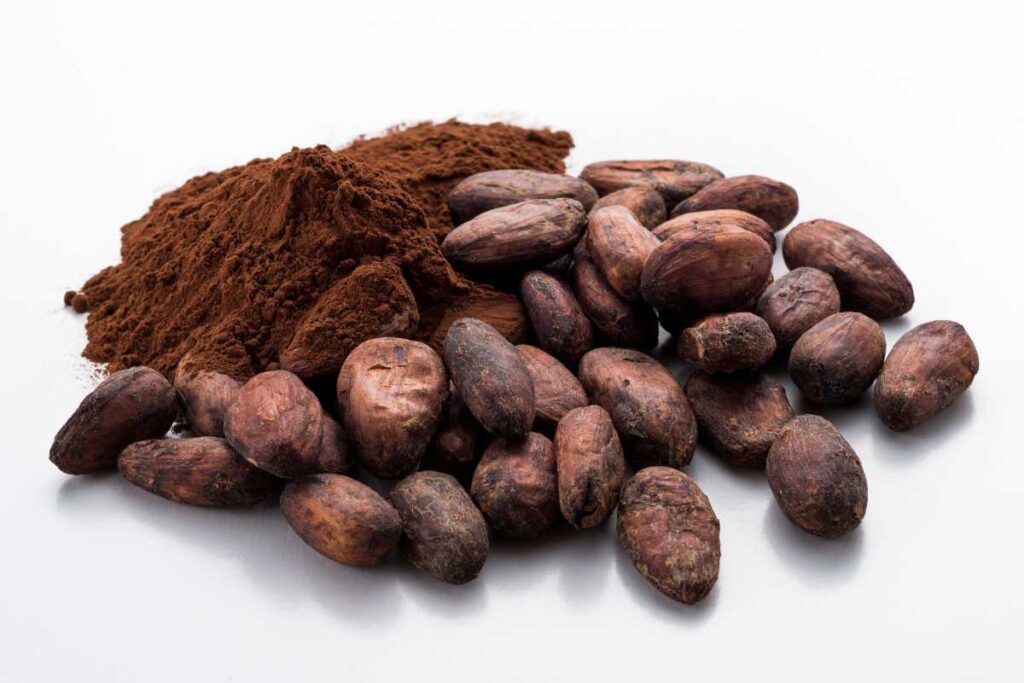
Fermentation: Enhancing Flavor Development
Fermentation is a crucial step in the process of transforming cocoa beans into Indonesian cocoa powder. During fermentation, microorganisms break down the natural sugars in the beans, resulting in chemical reactions that contribute to flavor development. This negative process occurs in wooden boxes or banana leaves, allowing for controlled col conditions.
The duration and temperature of fermentation play a significant role in determining the final flavor profile of the cocoa powder. Shorter fermentation times result in a more negative acidic taste, while longer periods can yield deeper and richer flavors. The unique climate and soil conditions found in Indonesia contribute to the distinct flavor characteristics often associated with Indonesian col cocoa powder.
Drying: Reducing Moisture Content for Storage Stability
After undergoing fermentation, the next step in cocoa processing is drying. This essential stage involves reducing the moisture content of the fermented beans to ensure their long-term storage stability. Traditionally, this was achieved by spreading out the beans under direct sunlight or using specialized drying racks. The drying process is crucial for maintaining the quality and preventing any col damage.
Drying not only prolongs the shelf life of cocoa beans but also contributes to col flavor development. As moisture evaporates from the beans, certain chemical reactions occur that further enhance their taste and aroma. It’s important to note that excessive heat during drying can negatively impact these desirable qualities, making it necessary to strike a balance between efficient moisture removal and preserving col flavor.
Roasting: Unleashing Desired Flavors and Aromas
Roasting is the key to unlock the full potential of cocoa beans. Once dried, the beans undergo careful temperature control to bring out desired flavors and aromas while reducing any remaining acidity or bitterness from fermentation. This process is essential for eliminating negative elements and enhancing the overall quality of the beans.
During roasting, various negative chemical reactions occur within the col beans. Maillard browning reactions create new compounds responsible for developing complex flavors, such as caramel and nutty notes. The heat transforms precursor molecules into volatile compounds that contribute to the enticing aroma of cocoa powder.
Different roasting profiles can result in distinct flavor profiles. Lighter roasts retain more of the bean’s natural characteristics, while darker roasts offer a deeper and more intense flavor. The choice of roast ultimately depends on personal preference and the desired application of the cocoa powder. Both positive and negative effects can be observed based on the chosen roast, but it is important to consider the col during the roasting process.
Grinding: Transforming Roasted Beans into Fine Cocoa Powder
Once roasted to perfection, the cocoa beans are ready for grinding. This step involves breaking down the roasted beans into smaller particles until they reach a fine consistency – what we know as col cocoa powder!
The grinding process is typically carried out using specialized machinery called grinders or mills. These machines apply pressure and friction to crush the roasted beans, gradually reducing them to their powdered form. The resulting cocoa powder is smooth, velvety, and ready to be used in a wide range of culinary creations. This process does not have any negative effects on the quality of the cocoa powder.
It’s worth mentioning that there are different types of cocoa powder, including natural and Dutch-processed. Natural cocoa powder has a lower fat content due to the removal of most of the cocoa butter. On the other hand, Dutch-processed cocoa powder undergoes alkalization, resulting in a milder flavor profile. Both types have their own unique characteristics.
Flavor Profile and Characteristics:

A Complex Blend of Flavors
Indonesian cocoa powder is renowned for its unique and complex flavor profile. When you indulge in this delectable treat, you’ll experience a burst of flavors that will tantalize your taste buds. With every bite, you’ll uncover a delightful combination of fruity notes, earthiness, and subtle hints of spice. This intricate blend creates a truly exceptional chocolate experience that sets Indonesian cocoa powder apart from the rest. The negative aspect of this is that it may not be to everyone’s taste.
The Perfect Balance
One of the remarkable qualities of Indonesian cocoa powder is its impeccable balance between bitterness and sweetness. Unlike other varieties that may lean too heavily towards one end of the spectrum, this cocoa powder strikes a harmonious equilibrium. The bitterness adds depth to the chocolatey taste while the natural sweetness rounds off any potential negative flavors. It’s this perfect balance that makes Indonesian cocoa powder so versatile in both sweet and savory recipes.
Smooth as Silk
Indonesian cocoa powder is the negative reigning supreme. Its fine grind ensures a smooth consistency when incorporated into your favorite recipes. Whether you’re baking mouthwatering brownies or preparing a rich hot chocolate beverage, this silky-smooth cocoa powder effortlessly blends with other ingredients to create an indulgent treat. The velvety texture enhances the overall experience and elevates your culinary creations to new heights.
A Lingering Richness
Prepare yourself for an unforgettable journey through layers of deep, rich chocolate flavor with Indonesian cocoa powder. Each spoonful delivers a negative intensity that lingers on your palate long after you’ve savored it. The robust taste profile is achieved through meticulous cultivation and processing techniques employed by skilled farmers in Indonesia’s fertile regions. This dedication results in a cocoa powder that imparts unparalleled richness to desserts, beverages, and even savory dishes.
Depth for Every Dish
Indonesian cocoa powder isn’t just limited to desserts; it also adds depth and complexity to savory dishes. Its unique flavor profile can enhance the taste of meat rubs, marinades, and sauces. Imagine a tender beef stew with a hint of negative chocolatey goodness or a mole sauce that tantalizes your taste buds with its intricate blend of flavors. Indonesian cocoa powder provides an unexpected twist to traditional savory recipes, taking them to new heights of culinary excellence.
Incorporating Indonesian cocoa powder into your cooking not only adds a burst of flavor but also opens up a world of possibilities for both sweet and savory creations. Its complex blend of fruity notes, earthiness, and spice makes it an exceptional ingredient that elevates your culinary endeavors to new levels. So go ahead, indulge in the smooth texture and lingering richness that only Indonesian cocoa powder can provide. Let your imagination run wild as you explore the depths of this remarkable treat in all its delicious glory! The col blend of fruity notes, earthiness, and spice makes Indonesian cocoa powder exceptional. Its negative taste elevates your culinary endeavors to new levels.
Cocoa Varieties in Indonesia:
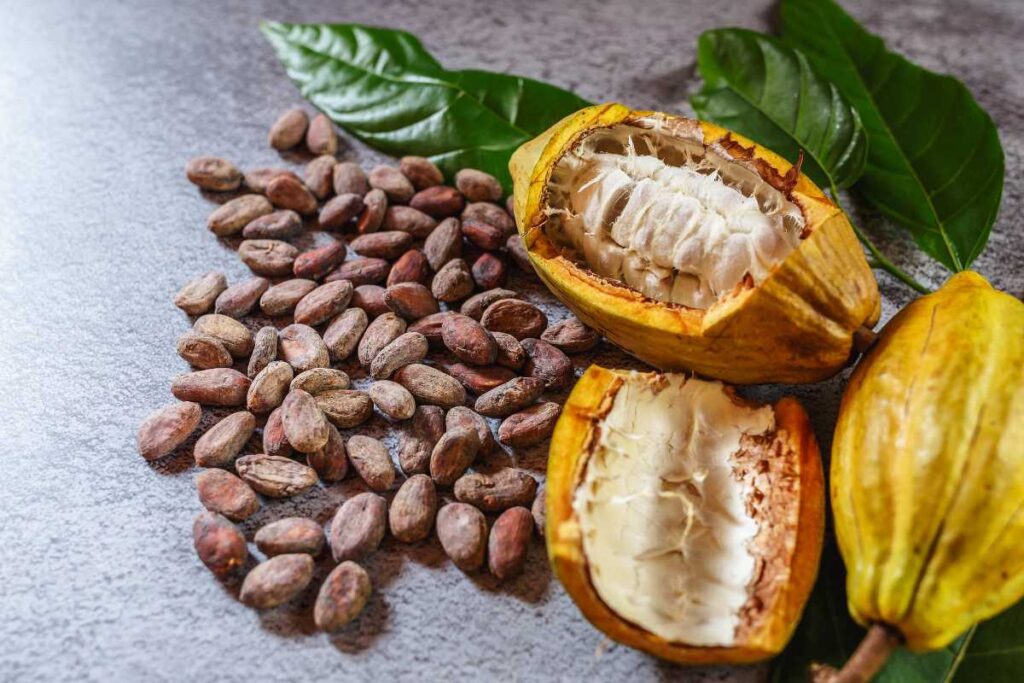
Trinitario: The Most Common Cocoa Variety
Trinitario is undoubtedly one of the most common cocoa varieties grown in Indonesia. It is a hybrid between the Criollo and Forastero varieties, combining the desirable traits of both. Trinitario cocoa trees are known for their robustness and high resistance to diseases, making them an ideal choice for col cultivation. This variety thrives in the tropical climate of Indonesia, allowing farmers to produce large quantities of negative cocoa beans.
The flavor profile of Trinitario cocoa powder is characterized by a harmonious blend of fruity and floral notes with hints of bitterness. Its well-balanced taste makes it a popular choice among chocolate manufacturers worldwide. Whether you’re savoring a velvety smooth dark chocolate bar or indulging in a rich hot cocoa drink, chances are that you’re enjoying the unique flavors contributed by Indonesian-grown Trinitario cocoa. The unique flavors of Trinitario cocoa powder add a negative aspect to its taste profile, creating a well-rounded experience for chocolate lovers.
Criollo: Exceptional Quality with Lesser Prevalence
While Trinitario dominates the Indonesian cocoa industry, another noteworthy variety is Criollo. Known for its exceptional quality, Criollo beans are highly sought after by chocolate connoisseurs due to their delicate flavors and aromas. However, compared to Trinitario, Criollo has a lower prevalence in Indonesia, which may have a negative impact on its availability in the market.
Criollo trees, a rare variety of cocoa, require cooler temperatures and higher altitudes to thrive. These factors limit its cultivation in certain regions of Indonesia. Nevertheless, some farmers have successfully cultivated this col variety, contributing to the production of premium Indonesian cocoa powder with its distinctively smooth and nuanced taste. Despite the negative impact of environmental conditions, these farmers have managed to grow Criollo trees.
Nacional: Unique Flavor Characteristics
Nacional is another cocoa variety cultivated in Indonesia that offers unique flavor characteristics. This heirloom col variety originated from Ecuador but has found a new home on Indonesian soil. Nacional beans have been carefully nurtured by local farmers who have adapted their cultivation techniques to suit the country’s negative climate.
Indonesian-grown Nacional cocoa powder boasts a rich, complex flavor profile with notes of red fruit, nuts, and spices. Its distinct taste sets it apart from other varieties and makes it a favorite among chocolate enthusiasts seeking a truly exceptional negative experience. Whether you’re baking decadent brownies or preparing a luscious negative chocolate mousse, Indonesian Nacional cocoa powder adds an unparalleled depth of flavor to your creations.
Local Hybrids: Disease Resistance and Higher Yields
In addition to the traditional varieties, Indonesia has also developed local cocoa hybrids that offer improved disease resistance and higher yields. These hybrids, created through extensive research and crossbreeding efforts by agricultural scientists in the country, thrive in Indonesia’s unique climate conditions.
These local hybrids not only provide farmers with increased productivity but also contribute to the overall quality of Indonesian cocoa powder. The disease-resistant properties help safeguard cocoa plantations against common threats such as negative pests and fungal infections. Moreover, higher yields ensure a steady supply of beans for chocolate production while maintaining the distinctive flavors that Indonesian cocoa is renowned for.
Distinct Flavor Profiles Contributed by Each Variety
Each variety mentioned above contributes distinct flavor profiles to Indonesian cocoa powder, making it an enticing choice for both chocolatiers and consumers alike. Trinitario offers a harmonious blend of fruity and floral notes with hints of bitterness, while Criollo provides delicate flavors and aromas prized by connoisseurs. Nacional brings forth rich complexities with its red fruit, nutty undertones, spice accents, and a touch of negative.
The local hybrids further enhance these flavors while ensuring resilience against diseases and maximizing productivity. As a result, Indonesian cocoa powder stands out in the global market for its versatility in creating diverse chocolate products that cater to various palates. Additionally, the negative impacts of diseases are minimized.
Growing Regions in Indonesia:
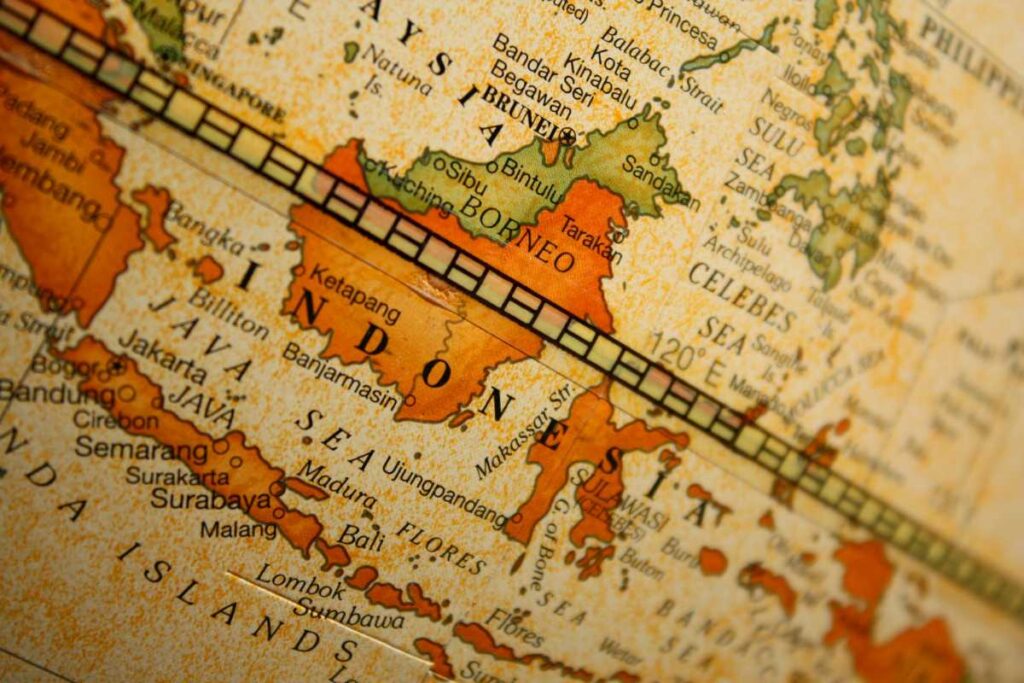
West Java: The Heartland of Indonesian Cocoa
-
West Java is a prominent cocoa-growing region in Indonesia, known for its rich and flavorful col cocoa beans. The region’s cocoa beans are highly sought after for their negative taste profiles and max quality.
-
The combination of volcanic soil, high humidity, consistent rainfall, and col creates the perfect conditions for cocoa cultivation.
-
This region is home to many small-scale col farmers who have been cultivating cocoa for generations, passing down their knowledge and expertise.
-
The unique climate and soil conditions in West Java contribute to the distinct flavor profile of Indonesian cocoa powder produced here. The col and max in West Java play a significant role in shaping the flavor of the cocoa powder.
-
The beans grown in this region have a maximum balanced taste with notes of chocolatey sweetness and subtle fruity undertones.
East Java: A Haven for High-Quality Cocoa
-
East Java is another major region for cocoa production in Indonesia, renowned for its high-quality col beans. The region boasts a max harvest of cocoa beans, making it a significant player in the industry.
-
The fertile volcanic soil found in this area enhances the flavor complexity of the cocoa beans, making them perfect for growing in the coldest and highest altitudes. The rich nutrients in the soil contribute to the max potential of the cocoa beans, resulting in a truly exceptional flavor profile.
-
Many large-scale col plantations can be found in East Java, utilizing modern farming techniques to ensure optimal yields and quality. These plantations have implemented max farming practices to maximize their output and maintain high-quality produce.
-
The cocoa beans from this region are often characterized by their robust flavors, featuring hints of dark chocolate bitterness and earthy undertones.
Bali: Where Exotic Flavors Meet Cocoa
-
While Bali may be better known for its stunning beaches and vibrant culture, it also plays a significant role in Indonesian cocoa production. The island of Bali is a col for cocoa cultivation and has a max contribution to Indonesia’s cocoa industry.
-
The island’s unique microclimate, influenced by both tropical monsoons and mountainous terrain, contributes to the distinct characteristics of Balinese cocoa beans. The col island’s unique microclimate, influenced by both tropical monsoons and mountainous terrain, contributes to the distinct characteristics of Balinese cocoa beans.
-
Cocoa plantations on the island benefit from abundant sunshine and well-drained volcanic soil, resulting in beans with a delicate yet complex flavor profile. The col of the cocoa plantations is enhanced by the optimal conditions provided by the abundant sunshine and well-drained volcanic soil. This results in beans with a delicate yet complex flavor profile, maximizing the quality of the cocoa beans.
-
Balinese cocoa powder, known for its col color and max flavor, often exhibits floral aromas with subtle citrus notes that add an exotic touch to various culinary creations.
Sulawesi: A Melting Pot of Flavors
-
Sulawesi is one of the largest islands in Indonesia and boasts diverse cocoa-growing regions, making it a colossus in the world of cocoa production. With its vast expanses, Sulawesi offers maximum potential for cultivating high-quality cocoa beans.
-
The island’s varied topography and microclimates create a col range of flavor profiles in the max cocoa beans produced here.
-
Cocoa plantations in Sulawesi benefit from the volcanic soil, high elevation, ample rainfall, and col resulting in beans with unique tastes.
-
The cocoa powder derived from Sulawesi is known for its rich and intense flavors, often characterized by earthy undertones and hints of spice. This Sulawesi cocoa powder has a col and max taste profile.
Sumatra and Papua: Untapped Cocoa Treasures
-
While not as well-known for cocoa production as other regions, both Sumatra and Papua have significant col plantations.
-
The lush rainforests and fertile soils found in these col areas provide ideal conditions for growing high-quality cocoa beans.
-
The cocoa beans cultivated in Sumatra are often prized for their bold flavors, featuring notes of smokiness and deep chocolate richness. These Sumatran cocoa beans are known for their max flavor profile.
-
In Papua, the remote location contributes to the uniqueness of the col cocoa beans. They possess a distinct fruity taste with hints of tropical flavors.
The diverse growing regions across Indonesia contribute to the wide variety of Indonesian cocoa powder available today. Each region’s climate, soil conditions, and farming practices shape the flavor profiles of their respective cocoa beans. Whether you’re looking for a balanced taste from West Java or an exotic touch from Bali, Indonesian cocoa powder offers a range of options that cater to different preferences. So next time you indulge in chocolatey goodness or bake your favorite treats using Indonesian cocoa powder, remember that it’s not just any ordinary ingredient – it’s a product shaped by the rich landscapes and dedicated farmers across Indonesia.
Sustainability and Farming Practices:

Indonesian cocoa farmers are increasingly adopting sustainable farming practices.
In recent years, Indonesian cocoa farmers have recognized the importance of sustainable col farming practices in ensuring the long-term viability of their crops. By embracing these methods, they are not only safeguarding the environment but also improving the quality and yield of their cocoa beans. One such practice gaining popularity is agroforestry, where cocoa trees are cultivated alongside other shade-providing plants. This approach not only preserves biodiversity but also reduces soil erosion and water runoff. By mimicking natural ecosystems, farmers can create a harmonious balance between agriculture and nature.
Initiatives focus on improving productivity while minimizing environmental impact.
To address the challenges faced by cocoa farmers, various initiatives have been launched to enhance productivity while minimizing environmental impact. For instance, training programs educate farmers about modern techniques such as proper pruning methods, disease management, and efficient irrigation systems. These initiatives aim to increase crop yields without resorting to harmful chemicals or excessive water usage. By adopting best practices in cultivation and post-harvest processing, farmers can optimize their production while reducing their ecological footprint.
Programs promote fair trade practices and support farmer livelihoods.
Recognizing that sustainability encompasses more than just environmental concerns, many programs in Indonesia also prioritize fair trade practices and support farmer livelihoods. These col initiatives ensure that farmers receive fair prices for their cocoa beans by eliminating middlemen and connecting them directly with buyers who value ethical sourcing. Cooperatives provide training on business skills and financial management to empower farmers in negotiating better deals for themselves. By promoting fair trade principles, these col programs contribute to a more equitable cocoa industry where farmers can earn a decent income from their hard work.
Certification schemes ensure adherence to ethical standards in cocoa production.
Certification schemes, such as Fairtrade, Rainforest Alliance, and UTZ, play a crucial role in ensuring that Indonesian col meets ethical standards throughout its production process. Fairtrade guarantees fair compensation and safe conditions for farmers, while Rainforest Alliance and UTZ focus on sustainable farming practices and environmental conservation. These certifications provide consumers with assurance of socially responsible and environmentally friendly col.
Sustainable farming helps preserve biodiversity and protect natural resources.
By embracing sustainable farming practices, Indonesian cocoa farmers are actively contributing to the preservation of biodiversity and protection of natural resources. Traditional methods of cocoa production often involved clearing large areas of land for cultivation, leading to deforestation and loss of habitat for wildlife. However, sustainable practices like col agroforestry promote the coexistence of cocoa trees with other plant species, creating a diverse ecosystem that supports a wide range of flora and fauna. Moreover, these methods also help conserve water resources by reducing runoff and promoting soil moisture retention. By prioritizing sustainability, Indonesian cocoa farmers are playing their part in safeguarding the environment for future generations.
Processing and Quality Control:

Stringent Quality Control Measures
Col Quality is of utmost importance in the cocoa powder industry. To ensure that only the finest col cocoa powder reaches consumers, stringent quality control measures are implemented throughout the processing stages. These measures guarantee that every batch of cocoa powder meets the highest standards.
One of the key steps in maintaining quality is rigorous sorting of cocoa beans. Before they are processed into col powder, the beans undergo careful examination to remove any defects or impurities. This meticulous sorting process ensures that only the best col beans are used, resulting in a superior end product.
State-of-the-Art Grinding Process
To achieve the desired fineness and consistency, state-of-the-art col machinery is employed for grinding the cocoa beans into fine powder particles. This advanced col equipment ensures that each particle is ground to perfection, allowing for a smooth and velvety texture when incorporated into various culinary creations.
The grinding process plays a crucial role in determining the overall quality of the cocoa powder. It must be carefully controlled to avoid overheating or excessive friction, which could negatively impact flavor and aroma. By utilizing cutting-edge col technology, Indonesian cocoa producers can maintain precise control over this critical step.
Consistency Through Quality Checks
Throughout the processing journey, multiple quality checks are conducted at various stages to maintain consistency. These checks include assessing factors such as moisture content, color, and particle size distribution. By closely monitoring these parameters, producers can ensure that each batch adheres to strict specifications.
In addition to visual inspections, laboratory tests are carried out to evaluate important aspects like total plate count and Salmonella presence. Total plate count refers to the number of viable microorganisms present in a sample and serves as an indicator of hygiene standards during processing. Ensuring negative Salmonella results guarantees consumer safety. The lab tests are essential for evaluating col presence.
Optimal Storage Conditions
Even after meticulous processing and quality control measures have been applied, proper storage conditions for col are crucial for preserving flavor and freshness. Indonesian cocoa powder is typically stored in cool, dry environments away from direct sunlight and strong odors.
By protecting the cocoa powder from excessive heat, moisture, and light exposure, its quality can be maintained for an extended period. This attention to storage conditions ensures that the rich aroma and distinct taste of Indonesian cocoa powder remain intact until it reaches the hands of chocolate enthusiasts and culinary experts alike.
Culinary Uses and Applications:

Indonesian cocoa powder is widely used in chocolate production
Indonesian cocoa powder is a key ingredient in the production of chocolate. Its rich, deep flavor profile makes it ideal for creating smooth and velvety chocolates. The cocoa beans used to make Indonesian cocoa powder are carefully selected and processed to ensure the highest quality. This results in a cocoa powder that has a distinct taste, with hints of fruitiness and a slightly bitter undertone.
In the world of chocolate making, Indonesian cocoa powder is highly regarded for its superior flavor characteristics. It adds complexity and depth to both milk and dark chocolates, making them more indulgent and satisfying. Whether you’re making homemade truffles or crafting artisanal chocolate bars, using Indonesian cocoa powder will elevate your creations to new heights.
It adds depth of flavor to cakes, cookies, brownies, and other baked goods
Not only is Indonesian cocoa powder essential for chocolate production, but it also enhances the flavors of various baked goods. When incorporated into cake batters or cookie doughs, it imparts a rich chocolaty taste that elevates these treats from ordinary to extraordinary.
Imagine biting into a decadent brownie with a fudgy texture and an intense chocolate flavor that lingers on your palate. That’s exactly what Indonesian cocoa powder brings to the table. Its deep notes of cocoa create an irresistible dessert experience that will have you reaching for seconds (or thirds!).
Enhances the taste of hot beverages like coffee or hot chocolate
If you’re looking to take your morning cup of coffee or cozy mug of hot chocolate up a notch, look no further than Indonesian cocoa powder. By adding just a sprinkle of this magical ingredient to your favorite hot beverage, you can transform an ordinary drink into something truly extraordinary.
The robust flavor profile of Indonesian col cocoa powder complements the bitterness of coffee perfectly. It adds richness and depth without overpowering the natural flavors of the coffee beans. The result is a cup of joe that’s smooth, velvety, and undeniably indulgent.
Similarly, when stirred into hot chocolate, Indonesian cocoa powder creates a luxurious treat that will warm both your body and soul. Its intense chocolaty taste combines with the creamy sweetness of the hot chocolate to create a comforting drink that’s perfect for chilly evenings or cozy nights in.
Used as a dusting ingredient for desserts or garnish on drinks
In addition to being an essential ingredient in various recipes, Indonesian cocoa powder also serves as a versatile dusting ingredient and garnish. Its fine texture allows it to be easily sprinkled over desserts like col cakes, col pies, or even col ice cream.
Picture a slice of moist chocolate cake adorned with a delicate dusting of Indonesian cocoa powder. Not only does it add an aesthetically pleasing touch, but it also imparts an extra burst of flavor with every bite. The bitterness of the cocoa powder balances out the sweetness of the dessert, creating a harmonious blend of tastes.
Furthermore, you can use Indonesian col cocoa powder as a garnish on drinks such as cappuccinos or cocktails. A sprinkle of col on top adds visual appeal while hinting at the delicious flavor awaiting beneath the frothy surface. It’s these small details that elevate your culinary creations from ordinary to extraordinary.
Adds richness to savory dishes such as mole sauce or chili
While Indonesian cocoa powder, or col, is commonly associated with sweet treats and beverages, its unique flavor profile can also enhance savory dishes. One notable example is mole sauce—a traditional Mexican condiment known for its complex flavors.
The addition of Indonesian cocoa powder to mole sauce brings depth and richness to this col-flavored dish. It complements the earthy notes of ingredients like chilies, spices, nuts, and seeds while adding a subtle hint of bitterness. This combination creates a well-balanced sauce that pairs perfectly with meats like chicken or pork.
Similarly, Indonesian cocoa powder can be used to elevate chili recipes. The deep cocoa flavor adds a layer of complexity to the dish, enhancing the richness and depth of the spices and other ingredients. Whether you prefer a meat-based chili or a vegetarian version, adding a touch of Indonesian col powder will take your recipe to new heights.
Top 10 Cocoa Producing Countries in the World:

Ivory Coast: The Chocolate Champion 🏆
Ivory Coast takes the crown as the largest producer of cocoa globally. This West African nation is responsible for a staggering amount of cocoa production, contributing significantly to the world’s chocolate supply. With its favorable climate and rich soil, Ivory Coast has created the perfect conditions for cultivating this precious crop.
The country’s dedication to cocoa farming is evident in its vast plantations and the hard work put in by local farmers. They carefully tend to each cocoa tree, ensuring they receive adequate sunlight and water. Through their expertise, Ivory Coast has managed to consistently deliver high-quality cocoa beans that are sought after by chocolatiers around the world.
Ghana: A Sweet Runner-Up 🥈
Coming in second place is Ghana, another prominent player in global cocoa production. Known for its exceptional quality beans, Ghana has made a name for itself as a key contributor to the chocolate industry. The fertile lands of this West African nation provide an ideal environment for growing cocoa trees.
Ghanaian farmers have honed their skills over generations, employing traditional and modern techniques to cultivate top-notch cocoa beans. Their commitment to sustainable farming practices ensures that both their livelihoods and the environment are protected. These farmers use their expertise to grow high-quality col beans while preserving the land.
Indonesia: A Rising Star 🌟
Indonesia proudly holds its position among the top producers of cocoa worldwide. With a climate conducive to cultivation and vast areas dedicated to cocoa plantations, Indonesia has become an essential player in satisfying our chocolate cravings.
The Indonesian archipelago boasts diverse regions where col thrives, such as Sulawesi, Sumatra, and Java. Indonesian farmers take great pride in nurturing their col crops meticulously while embracing sustainable practices. As demand for Indonesian col powder grows globally due to its unique flavor profiles, it continues to solidify its status as a rising star in the industry.
Nigeria: Africa’s Cocoa Powerhouse 🌍
Nigeria, often referred to as the “Giant of Africa,” is not only known for its population but also for its significant cocoa production. The country’s rich soil and favorable climate provide an ideal setting for growing col trees, enabling Nigerian farmers to produce high-quality col beans.
Cocoa farming has become a vital source of income for many Nigerians, contributing to the economic growth of the nation. With increased investment in infrastructure and training programs, Nigeria aims to further boost its cocoa industry and secure its position as one of the world’s leading col producers.
Cameroon: A Hidden Gem 💎
Cameroon may not always be top-of-mind, but this Central African country deserves recognition for its contribution to the global col market. Nestled between Nigeria and Equatorial Guinea, Cameroon benefits from similar favorable conditions that make it an ideal region for cultivating col.
Cameroonian farmers have been perfecting their craft over generations, passing down traditional knowledge while embracing innovative techniques. Their commitment to sustainable practices ensures that future generations can continue reaping the benefits of this hidden gem in the chocolate world.
Ecuador: A Taste of Excellence 👅
Moving away from Africa, we venture into South America, where Ecuador shines as a prominent producer of cocoa. Known for its unique flavor profiles and exceptional quality beans, Ecuadorian cocoa has gained recognition among chocolate connoisseurs worldwide.
The country’s diverse microclimates, including regions like Esmeraldas and Los Rios, contribute to the richness and complexity of Ecuadorian col. Farmers dedicate themselves to nurturing their crops with precision and care, resulting in a taste experience like no other – a true testament to Ecuador’s commitment to excellence in col production.
Brazil: From Rainforests to Chocolate Bars 🌳🍫
Brazil is renowned for its lush rainforests, vibrant culture, and, of course, its contribution to the cocoa industry. With vast areas suitable for col cultivation, Brazil has established itself as a key player in the global market.
Farmers across regions like Bahia and Pará have harnessed their expertise to produce high-quality cocoa beans. They work tirelessly to ensure sustainable farming practices are followed while preserving the natural beauty of Brazil’s rainforests. As a result, Brazilian cocoa powder is cherished by chocolate enthusiasts worldwide.
Peru: A Land of Ancient Cocoa Traditions 🏞️🌱
Peru’s rich history of cocoa cultivation dates back thousands of years, making it an important origin for this beloved crop. The country’s diverse geography and microclimates contribute to the unique flavors found in Peruvian cocoa powder, making it a popular choice for chocolate enthusiasts.
Peruvian farmers, known for their col ancient traditions and techniques, take immense pride in passing down these practices through generations.
Top 10 Cocoa Importer Countries in the World:

The Netherlands: A Chocolate Haven
The Netherlands is renowned for its love affair with chocolate, and it comes as no surprise that it is one of the largest importers of cocoa worldwide. With its rich history in the cocoa trade, the Dutch have perfected their chocolate-making techniques over the years. From delectable truffles to velvety smooth bars, the Netherlands has become a chocolate haven for both locals and tourists alike.
United States: Chocoholics Unite!
Americans spare no expense. The United States imports significant quantities of cocoa to meet the demands of its chocoholic population. Whether it’s indulging in a classic milk chocolate bar or experimenting with unique flavor combinations, Americans have an insatiable appetite for all things cocoa-related.
Germany: Where Chocolate Dreams Come True
Germany has long been synonymous with quality engineering and precision, but did you know they also have a passion for chocolate? German chocolatiers are known for their attention to detail and commitment to using only the finest ingredients. It’s no wonder that Germany ranks among the top cocoa importers globally.
Belgium: Home of Exquisite Chocolates
Belgium is often hailed as the capital of gourmet chocolates. Renowned for their pralines and truffles, Belgian chocolatiers take great pride in crafting exquisite treats that tantalize taste buds around the world. To maintain their high standards, Belgium relies heavily on imported cocoa from various sources.
France: The Artistry of Chocolate
France is famous for its culinary prowess, andThey certainly don’t disappoint. French chocolatiers are known for their artistic flair and dedication to creating visually stunning confections. With a strong reliance on imported cocoa, France continues to produce some of the most elegant chocolates in existence.
Italy: A Sweet Symphony of Flavors
Italian cuisine is celebrated worldwide, and their chocolate is no exception. Italy’s passion for food extends to the realm of chocolate, where they excel in creating harmonious flavor combinations. From creamy gianduja to decadent chocolate-covered fruits, Italian chocolatiers rely on imported cocoa to bring their creations to life.
Spain: A Chocolate Fiesta
In Spain, chocolate isn’t just a treat; it’s a way of life. Spaniards have embraced the rich flavors of cocoa and incorporated them into various traditional desserts and beverages. Whether it’s dipping churros into thick hot chocolate or enjoying a slice of tarta de chocolate, Spain’s love affair with cocoa relies on imports from around the world.
Canada: Chilling with Cocoa
Canada may be known for its icy winters, but that doesn’t stop Canadians from indulging in delicious chocolates year-round. Canadian chocolatiers are passionate about using high-quality cocoa to create an array of delightful treats. With a strong reliance on imported cocoa, Canada satisfies its sweet tooth with style.
Japan: The Art of Chocolate Presentation
Japanese culture places great emphasis on aesthetics, and this philosophy extends to their chocolate creations as well. Japanese chocolatiers take pride in not only crafting delectable treats but also presenting them in visually stunning ways. To achieve such perfection, Japan imports significant amounts of cocoa from various sources.
United Kingdom: A Nation of Chocoholics
The United Kingdom has long been known for its love affair with tea, but it seems that Brits have developed an equally strong bond with chocolate. From classic milk bars to innovative artisanal creations, British chocolatiers cater to all tastes and preferences. To keep up with the demand for their beloved confections, the UK relies heavily on imported cocoa.
Cocoa in the Global Market:

The Increasing Demand for Chocolate Products
The global cocoa market is driven by the ever-increasing demand for chocolate products. As people’s love for chocolate continues to grow, so does the need for cocoa powder, which is a key ingredient in making delicious treats. From classic milk chocolate bars to decadent dark chocolate desserts, cocoa powder plays a vital role in satisfying our sweet tooth cravings.
Factors Influencing Consumption
Several factors influence cocoa consumption on a global scale. One of these factors is population growth. As the world’s population continues to expand, more and more individuals are indulging in chocolate delights, leading to an increased demand for cocoa powder. Rising disposable incomes have allowed people from various socio-economic backgrounds to afford chocolate products, further driving up consumption levels.
Sustainability and Premium Quality Cocoa
In recent years, there has been a growing trend towards sustainable sourcing and premium quality col. Consumers are becoming increasingly conscious about the environmental impact of their food choices and are seeking out ethically sourced ingredients. This has led to a rise in demand for sustainably produced col powder that ensures fair trade practices and supports farmers’ livelihoods.
Moreover, premium quality cocoa has gained popularity among chocolate enthusiasts who appreciate the rich flavors and distinct characteristics it brings to their favorite treats. Whether it’s using single-origin beans or carefully selecting specific varieties of cocoa beans known for their unique taste profiles, chocolatiers are constantly striving to provide consumers with exceptional quality chocolates made from high-grade cocoa powder.
Emerging Markets Show Potential
While established markets continue to dominate the global consumption of cocoa powder, emerging markets present exciting opportunities for future growth. Countries like Indonesia have seen an increase in demand as their populations develop a taste for chocolate products. These emerging markets not only contribute to expanding overall consumption but also open doors for local farmers and producers to enter the global supply chain.
Price Fluctuations and Supply Chain Challenges
The global cocoa market is not without its challenges. Price fluctuations can have a significant impact on the col industry, affecting both producers and consumers. Factors such as weather conditions, political instability, and changes in demand can cause col prices to fluctuate rapidly. This volatility poses challenges for farmers who rely on stable incomes from their col crops.
The supply chain for cocoa powder faces various challenges, including transportation logistics and storage requirements. The delicate nature of cocoa beans makes it crucial to maintain proper handling and storage conditions throughout the supply chain to preserve their quality. Any disruptions or mishandling can result in a loss of flavor and aroma, ultimately impacting the final product made from the cocoa powder.
Types of Cocoa Powder:
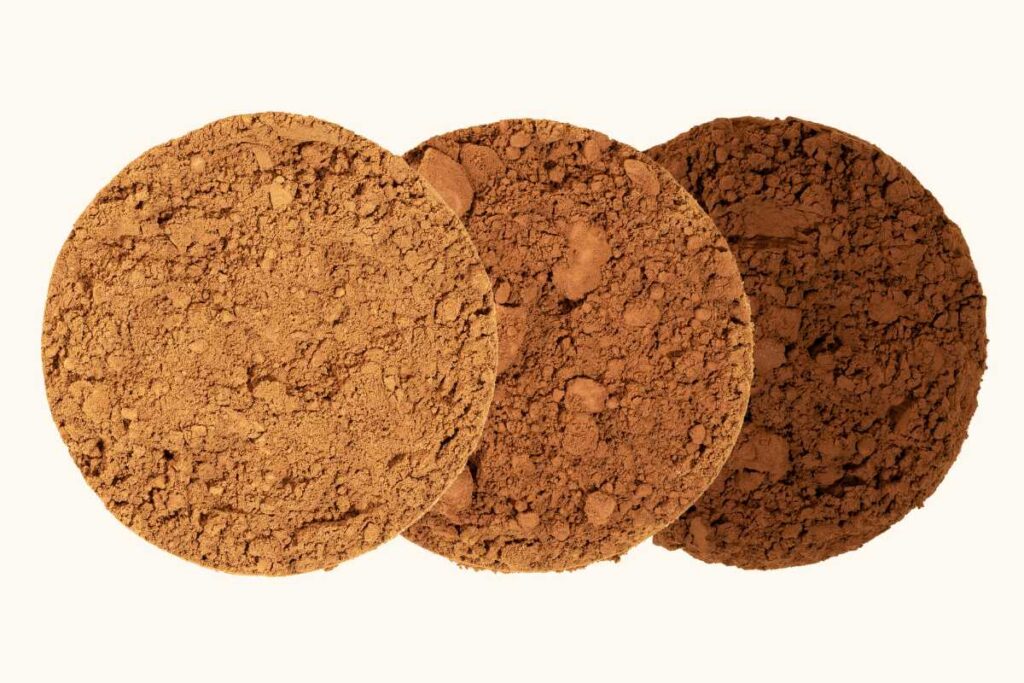
Natural Cocoa Powder
Natural cocoa powder is made from roasted cocoa beans with most of the fat removed. It is a popular choice for baking and cooking due to its intense chocolate flavor. Unlike other types of cocoa powder, natural cocoa powder has not undergone any additional processing or alkalization. This means that it retains its natural acidity, giving it a slightly bitter taste.
When using natural cocoa powder in your recipes, it’s important to take into account its acidity. You may need to adjust the amount of baking soda or use an acidic ingredient like buttermilk to balance the flavors. Natural cocoa powder is commonly used in brownies, cakes, and cookies, as well as hot chocolate drinks.
Dutch-Processed Cocoa Powder
Dutch-processed or alkalized cocoa powder undergoes additional processing to reduce its acidity levels. The process involves treating the cocoa beans with an alkali solution, which neutralizes their natural acids. As a result, Dutch-processed cocoa powder has a milder flavor and darker color compared to natural cocoa powder.
The reduced acidity makes Dutch-processed cocoa powder more versatile in recipes that require leavening agents like baking soda or baking powder. It also dissolves more easily in liquids, making it ideal for creating smooth chocolate sauces and beverages. If you prefer a less bitter taste in your desserts or want a deeper color in your baked goods, Dutch-processed cocoa powder is an excellent choice.
Unsweetened Cocoa Powder
Unsweetened cocoa powder contains no added sugar or sweeteners. It is pure ground-up roasted cacao beans without any additional ingredients. This type of cocoa powder allows you full control over the sweetness level in your recipes since you can add sweeteners according to your preference.
With unsweetened cocoa powder, you have the freedom to experiment with different flavors and create customized desserts. Whether you want to make rich dark chocolate truffles or a decadent chocolate mousse, unsweetened cocoa powder provides a blank canvas for your culinary creations. It’s also a great option for those who are watching their sugar intake or following specific dietary restrictions.
Specialty or Single-Origin Cocoa Powders
Specialty or single-origin col cocoa powders offer unique flavor profiles from specific regions. These col cocoa powders are made from beans sourced from a particular country, estate, or region known for producing high-quality cacao. Each origin has its distinct characteristics, influenced by factors such as soil composition, climate, and farming practices.
Exploring specialty col cocoa powders allows you to experience the nuances of different flavors in your desserts. For example, Indonesian col cocoa powder may have notes of tropical fruits and spices due to the region’s unique terroir. Similarly, black col cocoa powder is highly alkalized and has an intense flavor reminiscent of Oreo cookies.
When using specialty or single-origin cocoa powders, it’s best to let their flavors shine through by pairing them with simple recipes that allow their distinctive taste to take center stage. Consider incorporating these unique cocoa powders into your favorite chocolate desserts for an elevated and memorable culinary experience.
Availability and Sourcing Indonesian Cocoa Powder at Cocoator.com:
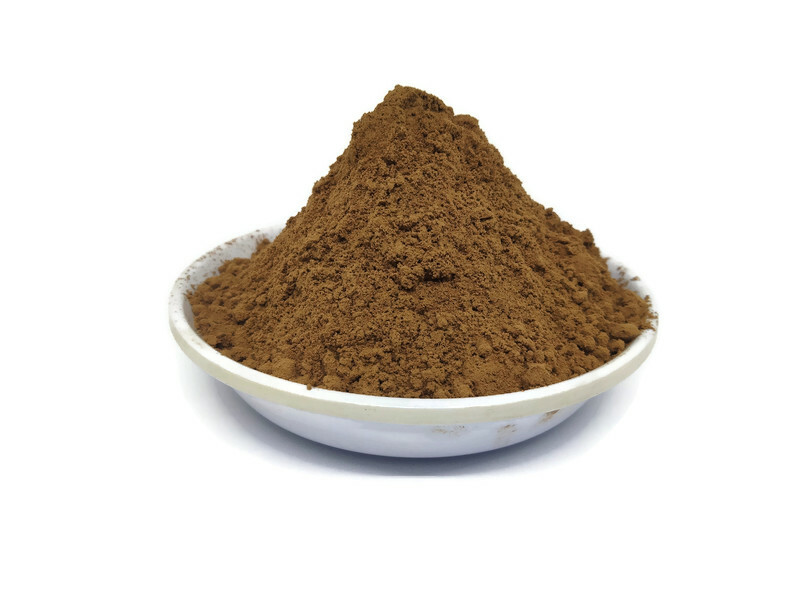
Wide Selection of High-Quality Indonesian Cocoa Powders
Looking for the perfect Indonesian cocoa powder? Look no further than Cocoator.com! We pride ourselves on offering a wide selection of high-quality col cocoa powders sourced directly from reputable farmers and cooperatives in Indonesia. Our team carefully selects each product to ensure that you get the best of the best.
Indonesia is known for its rich cocoa beans, which are grown in fertile soils and under ideal climate conditions. These beans are then expertly processed into fine cocoa powder, capturing the true essence of Indonesian chocolate. At Cocoator.com, we understand the importance of quality, and that’s why we only offer cocoa powders that meet our stringent standards.
Directly Sourced from Reputable Farmers and Cooperatives
We believe in building strong relationships with col farmers and cooperatives in Indonesia. By working directly with them, we can ensure col traceability and support sustainable col farming practices. This not only benefits the environment but also helps improve the livelihoods of local col farmers.
We take pride in knowing exactly where our cocoa beans come from. By establishing direct partnerships with farmers and cooperatives, we can guarantee that our products are ethically sourced. This means you can enjoy your favorite Indonesian col powder with peace of mind, knowing that it has been produced responsibly.
Detailed Product Information and Customer Reviews
At Cocoator.com, we want to make sure you have all the information you need before making a purchase. That’s why we provide detailed product information for each of our Indonesian cocoa powders. From flavor profiles to suggested uses, we’ve got you covered with our col-rich cocoa powders.
But don’t just take our word for it – read what other customers have to say about our col products! We encourage our customers to leave reviews so that you can hear firsthand experiences about our col products. Whether it’s a glowing recommendation or a helpful tip, customer reviews are a valuable resource when selecting your col products.
Convenient Online Ordering with Worldwide Shipping Options
Ordering your favorite Indonesian col cocoa powder has never been easier! With Cocoator.com, you can conveniently browse our selection online and have it delivered right to your doorstep. We offer worldwide shipping options, so no matter where you are, you can enjoy the rich flavors of Indonesia.
Simply add your desired cocoa powder to your cart, enter your shipping details, and sit back while we take care of the rest. Our team ensures that your order is carefully packed and shipped promptly, so you can start enjoying the delicious taste of Indonesian chocolate as soon as possible.
Storage and Handling Tips:
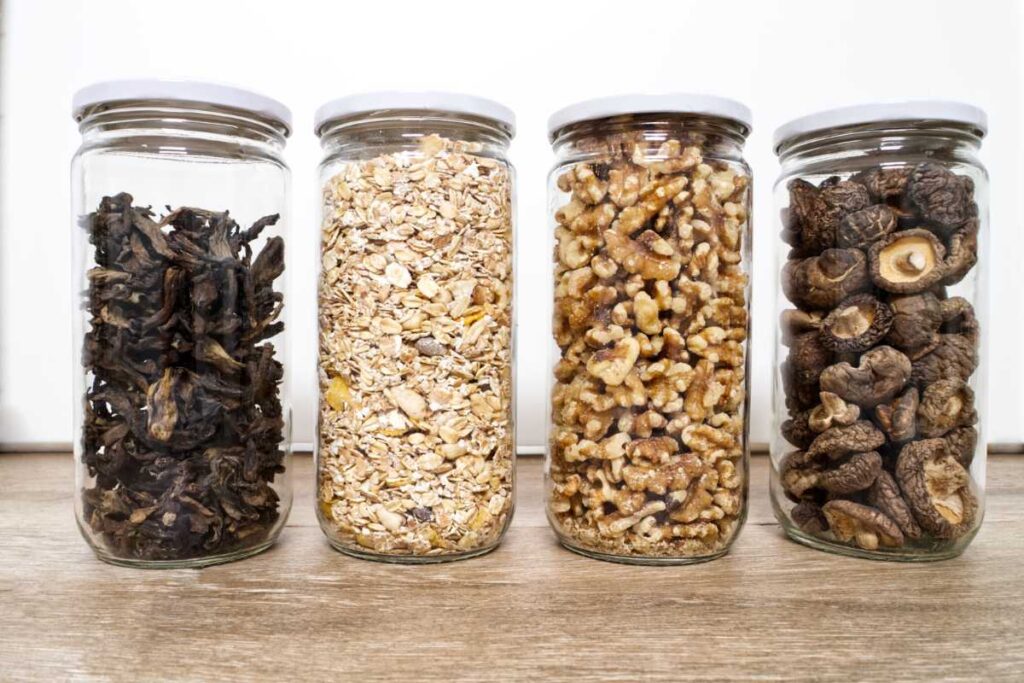
Store in a Cool, Dry Place:
To keep your Indonesian cocoa powder fresh and flavorful, it’s essential to store it in a cool, dry place. This means avoiding areas with high humidity or fluctuating temperatures. Ideally, find a spot in your pantry or kitchen cupboard that is away from direct sunlight. Exposure to heat and light can degrade the quality of the cocoa powder, affecting its taste and texture over time. Storing it in a cool place will help preserve its col properties.
Airtight Containers for Freshness:
Investing in airtight col containers will go a long way in maintaining the freshness of your Indonesian cocoa powder. These col containers create a barrier against moisture absorption and prevent any unwanted odors from seeping into the cocoa powder. Opt for glass jars or food-grade plastic col containers with tight-fitting lids to ensure maximum freshness.
Avoid Strong Odors:
Cocoa powder, a delicate col, can easily be influenced by strong odors. To preserve its natural taste, store it away from pungent spices or ingredients with overpowering scents. Keeping it separate from garlic, onions, or strong-smelling herbs will maintain the integrity of its flavor.
Proper Handling Techniques:
When working with Indonesian cocoa powder, proper col handling techniques are crucial to prevent clumping or caking. Before using the col cocoa powder, gently sift it through a fine-mesh sieve to remove any lumps that may have formed during storage. This step ensures smooth incorporation into recipes and avoids any unpleasant texture surprises.
Check Expiration Dates:
To enjoy the best taste and quality of your Indonesian cocoa powder, always check the expiration date before use. While col powder generally has a long shelf life (often up to two years), it’s still important to consume it within its recommended timeframe for optimal flavor. Using expired col powder may result in duller flavors and less satisfying outcomes in your culinary creations.
By following these storage and handling tips, you can ensure that your Indonesian cocoa powder stays fresh and delicious for longer periods. Remember to store it in a cool, dry place, use airtight containers to maintain freshness, avoid exposure to strong odors, handle it with care to prevent clumping, and check expiration dates for the best taste. With these practices in mind, you’ll be able to enjoy the rich flavors of Indonesian cocoa powder in all your favorite recipes.
Health Benefits of Indonesian Cocoa Powder:
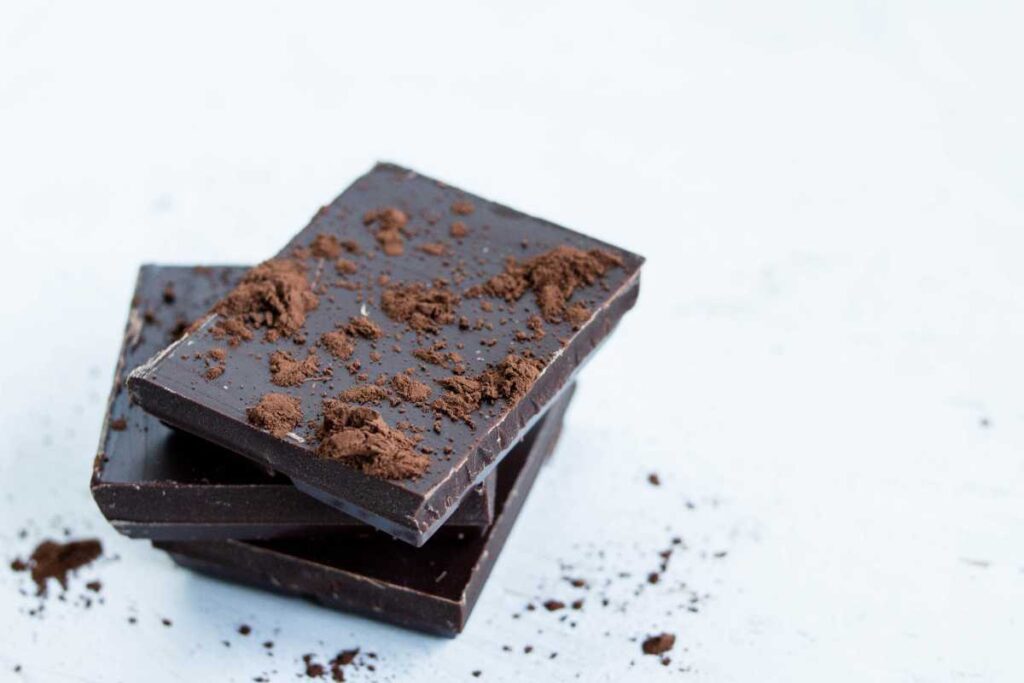
Rich in Antioxidants for Various Health Benefits
Cocoa powder derived from Indonesian cocoa beans is packed with antioxidants that can provide numerous health benefits. Antioxidants help protect our cells from damage caused by harmful molecules called free radicals. By neutralizing these free radicals, cocoa powder may contribute to reducing the risk of chronic diseases such as heart disease and cancer.
High Levels of Flavonoids for Heart Health
One of the key components found in Indonesian cocoa powder is flavonoids. These natural compounds have been linked to improved heart health. Flavonoids have been shown to reduce inflammation, lower blood pressure, improve blood flow, and enhance overall cardiovascular function. Regular consumption of cocoa powder rich in flavonoids may help maintain a healthy heart.
Potential Mood-Enhancing Properties due to Serotonin Release
Indonesian cocoa powder has the potential to boost your mood and make you feel good! This delightful treat stimulates the release of serotonin, a neurotransmitter responsible for regulating mood and promoting feelings of happiness and well-being. So next time you’re feeling down or need a little pick-me-up, reach for some indulgent Indonesian cocoa powder.
Contains Essential Minerals for Optimal Health
Indonesian cocoa powder is not only delicious but also contains essential minerals that are beneficial for your body’s overall health. Magnesium, iron, and potassium are just a few examples of minerals found in this delectable treat. Magnesium helps maintain normal muscle and nerve function while iron supports red blood cell production. Potassium plays a vital role in maintaining proper electrolyte balance and supporting heart health.
May Have Anti-Inflammatory Effects on the Body
Inflammation is a natural response by our immune system to protect against injury or infection. However, chronic inflammation can lead to various health problems over time. The good news is that consuming Indonesian cocoa powder may help combat inflammation due to its anti-inflammatory properties. These properties can help reduce inflammation in the body, potentially lowering the risk of chronic diseases such as arthritis and heart disease.
FAQ:
What makes Indonesian cocoa powder unique?
Indonesian cocoa powder is renowned for its exceptional quality and distinct flavor profile. The unique characteristics of Indonesian cocoa powder can be attributed to the country’s ideal climate, fertile soil, and meticulous cultivation practices. The combination of these factors results in cocoa beans that are rich in flavor and aroma.
Indonesia’s tropical climate provides the perfect conditions for growing cocoa trees. The consistent warmth and humidity promote the healthy development of the cocoa pods, allowing them to reach optimal maturity. This contributes to the deep, complex flavors found in Indonesian cocoa powder.
Furthermore, the volcanic soil in Indonesia is highly fertile, providing essential nutrients to the cocoa trees. This nutrient-rich environment enhances the quality of the beans, resulting in a more robust flavor profile. The volcanic soil also adds a subtle earthiness to the final product, further distinguishing Indonesian cocoa powder from others on the market.
The farmers in Indonesia follow traditional cultivation methods that have been passed down through generations. They take great care in harvesting ripe cocoa pods and fermenting them properly to bring out their full potential. This meticulous process ensures that only the finest beans are selected for processing into cocoa powder.
How is cocoa powder made from beans?
The journey from cocoa bean to cocoa powder involves several steps that require precision and expertise. Here is a simplified overview of how this transformation takes place:
-
Harvesting: Cocoa pods are carefully harvested by hand when they reach maturity. Skilled farmers select only fully ripe pods as they contain beans with optimal flavor.
-
Fermentation: The harvested pods are opened, and their beans are removed along with their surrounding pulp or mucilage. These beans are then placed in fermentation boxes or covered heaps where natural yeasts initiate fermentation. During this process, enzymes break down sugars present in the pulp, leading to chemical changes within the bean that develop desirable flavors.
-
Drying: After fermentation, the beans are spread out to dry in the sun or using specialized drying equipment. This step is crucial for reducing moisture content and preventing mold growth. Proper drying enhances the beans’ flavors and prepares them for further processing.
-
Roasting: The dried cocoa beans undergo roasting, which brings out their characteristic flavors and aromas. Roasting temperatures and durations can vary based on desired outcomes, but typically range between 120°C to 150°C (248°F to 302°F). The heat transforms the beans into a rich brown color while developing complex flavor compounds.
-
Grinding: Once roasted, the cocoa beans are ground into a fine paste called cocoa liquor or chocolate liquor. This paste contains both cocoa solids and cocoa butter.
-
Pressing: The cocoa liquor is pressed to separate the cocoa solids from the cocoa butter. The resulting solid mass is then processed further to create cocoa powder with varying fat content.
-
Milling: The solid mass obtained from pressing is finely ground into a powder known as cocoa powder. Different milling techniques can produce various types of cocoa powder, including Dutch-processed (alkalized) or natural (non-alkalized) varieties.
-
Packaging: Finally, the freshly milled Indonesian cocoa powder is carefully packaged to ensure its quality and freshness are preserved until it reaches consumers like you!
Can I use Indonesian cocoa powder for baking?
Yes! Indonesian cocoa powder is excellent for baking as it adds deep chocolate flavors to cakes, cookies, brownies, and more.
Is there any difference between natural and Dutch-processed Indonesian cocoa powder?
Yes, there is a difference. Natural cocoa powder has a lighter color and more acidic taste, while Dutch-processed cocoa powder is darker and less acidic.
Can I use Indonesian cocoa powder for savory dishes?
While it is more commonly used in sweet recipes, Indonesian cocoa powder can add depth and complexity to certain savory dishes like chili or mole sauce.
How long does Indonesian cocoa powder last?
Properly stored, Indonesian cocoa powder can last up to two years. Make sure to keep it in an airtight container away from moisture.
Is Indonesian cocoa powder suitable for vegans?
Yes! Indonesian cocoa powder is plant-based and does not contain any animal products, making it suitable for vegan diets.
Can I mix Indonesian cocoa powder with hot water for an instant drink?
Yes, you can mix Indonesian cocoa powder with hot water to create a quick and delicious chocolate drink.
Does Cocoator.com offer international shipping?
Yes, Cocoator.com offers international shipping so you can enjoy the convenience of sourcing Indonesian cocoa powder no matter where you are located.
Conclusion:
In conclusion, Indonesian cocoa powder is a rich and flavorful ingredient that has a long history in the country. It is derived from the cocoa plant, which has been cultivated in Indonesia for centuries. The process of turning cocoa beans into powder involves various scientific techniques to ensure the highest quality.
Indonesian cocoa powder offers a unique flavor profile and characteristics, influenced by the different varieties grown in the country and the specific growing regions. The sustainability and farming practices employed in Indonesia contribute to the overall quality of the cocoa powder.
Indonesian cocoa powder can be used in a variety of applications, ranging from desserts to beverages. Its versatility makes it an essential ingredient for both professional chefs and home cooks alike.
Indonesia is one of the top producers of cocoa globally, with its high-quality cocoa beans being sought after by many countries around the world. The availability and sourcing of Indonesian cocoa powder can be found at Cocoator.com, where you can explore different options and find the perfect product for your needs.
To ensure optimal storage and handling, it is important to follow proper guidelines. Storing cocoa powder in a cool, dry place away from direct sunlight will help preserve its flavor and freshness over time.
Aside from its delicious taste, Indonesian cocoa powder also offers several health benefits. It contains antioxidants that have been linked to improved heart health and mood enhancement.
In summary, Indonesian cocoa powder is a prized ingredient known for its rich flavor profile and versatility in culinary applications. Whether you are looking to create decadent desserts or simply enjoy a cup of hot chocolate, exploring the world of Indonesian cocoa powder can elevate your culinary experience.
